
| « The Advertising Bubble | Cape Adare » |
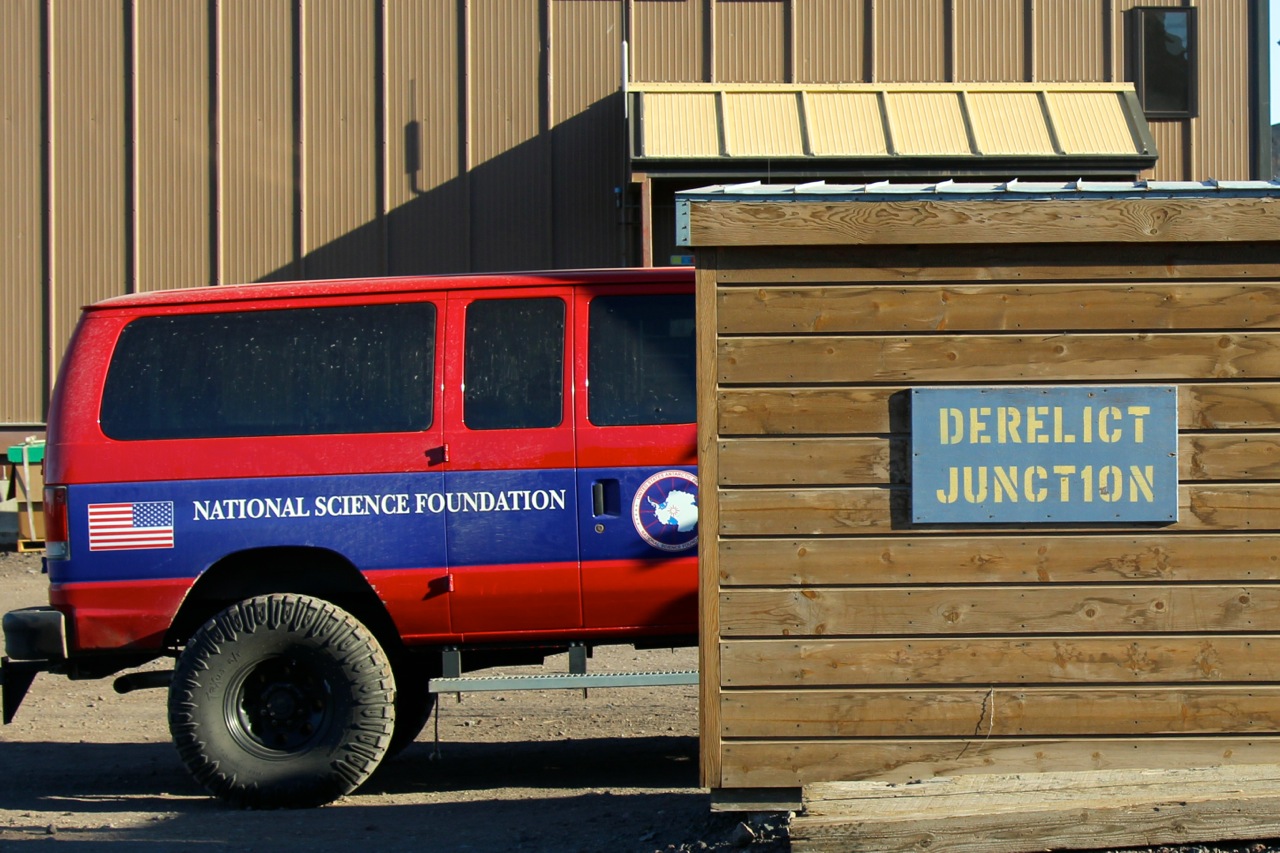
Somewhere below the Antarctic circle, I catch Tatiana, the waitress from the port side dining room, in a moment of leisure.
This is the first time I've ever seen her off-duty. The galley crew on the Akademik Shokalskiy work twelve-hour days preparing, serving, clearing, and cleaning up after meals for fifty-six passengers, often in seas so bad that diners have to hold the edge of the table to keep from falling off their stools (which are prudently bolted to the floor).
I ask the cornered Tanya a few questions about her life on the ship, and she tells me she’s been working the Ross Sea circuit for the last six years.
“Is there anything you're still excited to see in Antarctica?”
“Yes. I would like to visit McMurdo.”
“Really? You want to see the American base?”
She grins.
“I want to buy a Zippo.”
I am not surprised to hear this. The ship’s officers have told me all about the Zippo lighter. Portable, useful, and stylish, it is the most desirable consumer item on the Antarctic continent. Unlike the Chinese knockoffs sold in other ports, the McMurdo article is the real deal, stamped ‘Made in Bradford, PA’ on an all-metal case, with a little golden silhouette of Antarctica embossed on the side.
But you can't just buy this lighter. Getting one involves a Grail-like quest.
For starters, you have to cross the Southern Ocean from New Zealand in a tippy little ship, a two-week ordeal that leaves everyone bruised and miserable. Once in Antarctic waters, you must find a path through the belt of ice that typically guards the entrance to the Ross Sea. There is no guarantee that this will be passable—an identical tourist trip in 2008 had to go back to New Zealand without even glimpsing Antarctica (no refunds).
If you make it through to open water, you must time your arrival at McMurdo Sound between the time the resupply ship arrives (the high point of the Antarctic liturgical calendar, when the entire station is occupied with Offload) and the time a few weeks later when most of the staff have left for home. If McMurdo Sound is frozen over, which happens frequently and unpredictably, there are no second chances. The Shokalskiy is ice-hardened, but it’s not an icebreaker. And there’s no time in the itinerary to wait for conditions to change.
Even if everything goes perfectly, the harbor is open, and the ship is able to anchor in Winter Quarters Bay, passengers still need an invitation from the Americans to come ashore. The station is friendly to visitors, but tourism is not an officially-sanctioned Antarctic activity. Tours are conducted by NSF volunteers in their free time; if the volunteers are busy, you stay on the ship. It’s perfectly possible to reach McMurdo, sit at anchor and stare at the gift shop, three hundred meters away, without being able to come ashore. The ship’s folklore abounds in stories of such near misses.
The whole thing is like one of those Russian fairy tales, where the hero must cross seven seas and seven mountains, slay Koshchei the Deathless, find the giant oak, exhume an iron chest, open it to find a hare, cut the hare open to find a duck, dig through the duck to find an egg, and crack the egg open to reveal an enchanted golden needle, or in this case, Zippo lighter.
Even if the ship makes it to the station, the Americans are willing, and our leader Rodney allows the crew to come ashore with the passengers, dark forces can still come into play in the gift shop itself. The Third Mate tells me about a frustrating visit to the station the previous year. Every passenger who wanted one was able to buy a Zippo, but a deputation from the crew arriving moments later was told they were gone. The staff had hidden them under the counter in a fit of russophobia.
Coming around the top of Ross Island, the suspense is almost too much for me to bear.
I want that goddamned lighter.

With the exception of the small polar station it supplies, McMurdo is the southernmost outpost of American empire. It is also the only significant human settlement in the Ross Sea. Over a thousand people work here in the summer, and 250 stay over for the winter.
The ship’s officers are full of theories about why the Americans are here in numbers, and as a suggestible person who has spent three weeks staring at moving water, I find it easy to believe every crazy thing they say.
“You don't put a thousand soldiers in the middle of nowhere for science,” the Third Mate tells me darkly.
“I don't think they're soldiers. Most of them are civilian contractors.”
By now the Russians are used to my naïveté.
“So who flies these ‘contractors’ to Antarctica?"
“The Air National Guard."
“And who supplies them by sea?”
“The Coast Guard and Navy.”
He waits for me to connect the dots, but I resist.
“Why would we build a secret military base at the bottom of the world?”
“Missiles.”
“Missiles?”
“You put missiles in the ice.”
“Why not use our huge fleet of nuclear submarines?”
“The ice is cheaper.”
And there you have it. I make a mental note to approach America’s premier research station with my eyes open. But I also start to worry about what the Russians are up to at their ring of stations around Antarctica.
McMurdo Station has never completely shed its military origins. The original base (Williams Air Operating Facility, named after an unfortunate whose tractor fell through the sea ice) was built by the US Navy in the run-up to the International Geophysical Year. The IGY was all about peaceful scientific cooperation, but in a Cold War context that just meant competition by other means. The point of building McMurdo was to get Americans to the South Pole, part of an unpublicized Antarctic base race with the Soviet Union. No one had been back to the Pole since the Amundsen and Scott expeditions of 1911, and it was the obvious prestige location in Antarctica. Whoever controlled the Pole would control—well, a tiny area of featureless ice cap. But it seemed important at the time.
The stymied USSR had to settle for a base at the Pole of Inaccessibility, possibly the only place on the continent more miserable than the South Pole. The location lived up to its name. After a few difficult years, the Soviets gave up. All that remains of the station today is a bust of Lenin staring out towards Moscow from a snow drift.
Once built, McMurdo proved a useful staging area for other activities in Antarctica. After the 1959 Antarctic Treaty reserved the continent for peaceful use, the Navy handed over the station to the National Science Foundation, which oversees the entire American Antarctic program.
This program is devoted to science in the same way that the German Air Sports Association in the 1920’s was motivated by a pure love of gliding. In both cases, the terms of a restrictive treaty prevent the open pursuit of more practical goals. This fits with a long Antarctic tradition of using science as a fig leaf for ambition. Every expedition to the continent has proclaimed the purity of its scientific aims while also doing its best to stake out as much territory as possible. In Antarctica, the national flag always goes up before the weather station.
While McMurdo has been consecrated to science, its day-to-day operations are run by defense contractors (previously Raytheon, now Lockheed Martin) who gather like sharks every decade or so when the lucrative Antarctic contract comes up for rebid. The NSF is prohibited by charter from running its own facilities, so at McMurdo, the military-industrial complex is king.
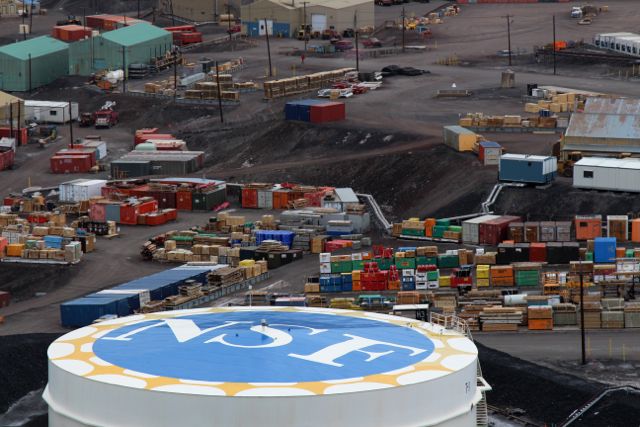
McMurdo is close to the permanent ice of the Ross Ice Shelf. When the station was established in 1956, at around the same time of year as our visit, the sea ice extended for forty miles out. The supply ships had to dock at the ice edge, and tractors ferried everything the rest of the way.
This year we are lucky, and there is open water all the way to Winter Quarters Bay. Descending along the coast of Ross Island, we pass Shackleton’s hut at Cape Royds, Scott’s hut at Cape Evans, a long glacial finger of ice from Mt. Erebus, and reach our anchorage in front of McMurdo at the magic hour when the never-setting sun hangs suspended like a drop of liquid fire over the southeastern horizon, bathing everything around us in its transcendent, golden light.
It doesn't help.
“I am so sorry about this,” I say to the non-American passengers who have joined me on deck. They are staring across the water.
“I had no idea.”
McMurdo looks like a series of shipwrecks that people have tried to make the best of. Four diarrhea-brown dormitories dominate the landscape. Behind them is an assortment of white fuel tanks, pressed into the dirt like oversize aspirin, and between these large structures extends a chaos of pallets, antennas, earth-moving equipment, sewer pipes, and general rubble. A fat radome perches on the ridge line like a giant’s golf ball. We can hear earth-moving equipment growling in the volcanic dirt, as if the island hasn't been put through enough. The whole visible part of the peninsula has been bulldozed into terraces to try and contain the American base.
It’s not just that McMurdo station is ugly—and it is lens-shatteringly ugly—but that there is so damned much of it. After sailing for three weeks with no signs of human activity, no power lines, no chemtrails, no evidence that we exist on the planet at all except for a mournful wooden cabin at Cape Adare, it’s jarring to see this open-air museum of prefabricated regret. Only the United States could find a way to create sprawl with a thousand people.
Old-timers cheerfully concede the place is ugly, but point out that things used to be worse. Scott’s Discovery Hut from 1903, which now stands somewhat apart from the station, was until recently surrounded by a fuel farm. The fickle nuclear reactor on Observation Hill has been shut down and shipped back to the United States, along with the thousands of tons of soil it contaminated during its short but eventful life. An open-air dump that once attracted Antarctic scavengers (skua and New Zealanders from Scott Base) has been excavated clean and shipped out as well. Raw sewage goes into a treatment plant instead of icicling directly into McMurdo Sound.
Most importantly, the station no longer disposes of its dead equipment and construction debris by dragging it onto the sea ice. Shamed by a nearby Greenpeace station that was active in the eighties, and constrained by the strict 1991 Madrid protocol to the Antarctic Treaty, McMurdo sends every particle of its trash back home for recycling or disposal. Sea ice and American garbage are Antarctica’s chief exports.
There are plans for a greener and smaller McMurdo. The NSF is pushing for appropriations that would let them build a modern facility and get rid of the chaos of Quonset huts and trailers that requires everyone to be constantly going outside. But the NSF faces the same structural problem as NASA: both agencies have to carve expensive capital projects out of a modest operating budget, in a political climate that is becoming hostile to science. And there is no senator from McMurdo to fight for Antarctic infrastructure.
I'm completely unsure as to how tourism works, but I do have mixed feelings about it. The environment down there is pristine and hardly touched, and tourists don't seem to respect it nor get the training we do to keep it the way it has been for millions of years.—buttgoblin_eater, I Am A Previous McMurdo Employee in Antarctica, Ask Me Anything!
Rodney gathers us in the ship’s auditorium for a briefing. Both the Americans and the New Zealanders have invited us to visit. Zodiac landings will be conducted with military precision, with four groups of twelve passengers sent on the half hour, and a final raft of ten picked volunteers from the crew. In a nod to geopolitical realities, the Russians will be taken directly to the gift shop.
On the other side of the continent, the question of how to handle visitors at research bases has become vexing. The boom in Antarctic tourism now brings forty thousand people a year across the Drake Passage to the Antarctic Peninsula. At Palmer station (population 40), smaller ships are allowed to come ashore, but kept out of the buildings where work is done. Larger ships aren't allowed to land at all. Instead, volunteers from the base come aboard to brief the passengers and awkwardly sell souvenirs in the ship’s bar. Palmer handles about a dozen ships and over a thousand visitors every summer, sometimes on consecutive days, and the staff there feels the pressure.
Things are easier in the Ross Sea. This year only two ships—the Shokalskiy and its sister ship the Khromov—will visit this side of Antarctica, bringing about a hundred visitors. There are never going to be cruises here in any numbers. The trip takes too long and cannot be made comfortable. The same rounded bottom that keeps the Shokalskiy from snagging on sea ice makes it roll like crazy in open water. On a regular cruise ship, thirty degrees of roll sends grand pianos smashing into the walls, and leads to refunds, incident reports and investigations. The Shokalskiy rolls to thirty degrees every four seconds, back and forth, all the way across the Southern Ocean. A few times a day the ship tilts past forty degrees, the angle at which the grippy foam placemats on every surface release their hold on a coffee mug. And at least twice during the voyage, we roll past fifty degrees ①. At that point it makes more sense to try to stand on the walls than the floor.
Rodney says there is no cost-effective way to build a new passenger ship that could cruise the Ross Sea. The Russian charters ② are marginally profitable, but they are getting old, and are probably not worth overhauling. Few people have five weeks and tens of thousands of dollars to spend on a trip that can't even guarantee them a glimpse of their destination. The ban on heavy fuel oil, strict limits on the numbers of people who can land, ice safety requirements, and outrageous weather mean you will never see a Carnival cruise ship at McMurdo. And that’s for the best.
The only way tourists might come to the Ross Sea in numbers would be by air, but the memory of the 1979 crash, when an Air New Zealand plane flew into the side of Mt. Erebus, is too painful. There’s still visible wreckage on the volcano. Once the Russian ships are gone, the only people touring the Ross Sea will be dignitaries flown in by the various national programs, one-off charters, and the occasional mad sailor.
Rodney puts on his stern face for the briefing. We are guests of the National Science Foundation, who have volunteered to show us around. McMurdo is a working base. That means we will not wander, we will not stop, we will not stray from the route, and we won't touch anything. He repeats that twice.
Early in the voyage I took umbrage at the infantilizing, schoolmasterish tone of these briefings. But several landings have made me a believer in Rodney’s approach. Our passengers, mostly retired engineers with their reluctant spouses, thrive on structure. They have a tendency to wander (albeit at low speed) and an almost touching capacity for misadventure once ashore.
Rodney stops for questions.
No, we are not going to see any animals, except for American scientists. There may be bathroom breaks, but it’s better to go on the ship. No, we may not walk the four kilometers to the New Zealand base. There will be a second series of Zodiac landings in the afternoon, and the people from Scott Base will come give us a ride in their own vehicles. No, he does not know the current temperature and wind speed. This is Antarctica. Dress accordingly. Wear your gumboots. You will get coffee and a snack. Remember to say “thank you” and wipe your feet.
The courteous Russians have hoisted an American flag, which the wind is trying to send back to New Zealand. Like blasting your car defroster on a cold day, wind is the price you pay for ice removal in Antarctica. Anywhere there are bare rocks, you'll find unspeakable gales keeping them that way. At McMurdo, the wind pours off the ice cap, down the glaciers, and along the Ross Ice Shelf, retracing Scott’s route to the pole in reverse. The early explorers, eager for any spot that offered an ice-free landing, found themselves building huts in some of the windiest places on earth.
McMurdo station is sheltered by a ridge line, but the ship is fully exposed. Angry little waves are forming in the few hundred meters of open water between us and the sea ice. We climb into Zodiac rafts from a metal stairway and huddle together, six to a side. Every time the raft hits a wave, the spray freezes on our clothing in a matte white shell. I arrive on shore covered in a carapace of ice. It cracks off easily, like the chocolate from a Klondike bar, and to my surprise I am much more comfortable being frozen than I would have been getting wet.
McMurdo dispatch has asked us to land at 'Sausage Point', which appears nowhere on the detailed Russian charts of the harbor. Like so much about McMurdo, the explanation turns up later in Big Dead Place:
A few tons of sausage buried in the ground during a previous era had been discovered by a Fleet-Ops operator who was drilling into the earth in preparation for a new building down by the sea ice. With the drill he struck a noxious pocket of primeval sausage slime that squirted onto his face, searing his eye with a swift yellow infection that puffed up half his face and put him out of commission for about a week. The earth-sausage mixture was excavated from the frozen ground and dumped in piles beside the road, where a squad of GAs [general assistants] was dispatched into the feeding swarm of skuas to separate the meat from the rock and throw it into triwalls that we banded up and loaded in milvans to be exported to the United States.
Today Sausage Point is an unremarkable bar of gravel not far from the ice pier. This curious piece of infrastructure, a large muddy rectangle built up over months by pouring layers of seawater over a mesh of steel cables, is the main entry point for cargo to the station. In the summer they do their best to insulate it with protective coats of dirt.
Every three years or so, despite the best efforts of the Americans, the wind and tides deal the ice pier a mortal blow, and the station has to request a waiver from the EPA to drag the pier’s broken corpse out to sea, where it melts and deposits its steel cables on the long-suffering ocean bottom.
Three NSF volunteers in red parkas are waiting on shore to meet us. They stress the importance of staying together and avoiding bulldozer traffic as we walk up the gentle slope to the center of camp, about half a kilometer away. Their optimism breaks my heart. We have barely made it off the landing ground before we start losing Ken, a retired Australian colonel and at 83, the oldest member of our expedition. Ken is a terrific sport and never complains, but gentle slopes are his Kryptonite. There is no way he can get up to the base unassisted.
Soon our landing party is stretched into a thin line along the road from Sausage Point. The worried volunteers shuttle back and forth between us, muttering into their radios. It has taken us fifteen minutes to leave the landing area and in the process we have, as military historians would say, ceased to function as a coherent organized unit. Sausage Point has become our Hamburger Hill.
I witness scenes of individual heroism. Spouses try to shield one another from the biting wind. One of the nimbler passengers dashes across the road to remind a wayward group that they are not in New Zealand (whatever their feelings about the legal status of the Ross Dependency) and must keep on the right-hand side or be clobbered by one of the giant American pickup trucks.
The NSF volunteers triage our group into the walking well, the stragglers, and those who are beyond saving. The first two groups press on to our first destination, the Chalet, an ancient administrative building built in a style I would call ‘Ford-era National Park’.
Nothing about McMurdo improves with proximity. Up close, the station looks like a cross between an oil refinery and a struggling community college. There is an enormous amount of motor traffic, both in earthmoving machinery and in fat red pickup trucks with the NSF logo. If anyone has an image of Americans as car-happy cowboys, today is doing nothing to dispel it.
As the administrative heart of McMurdo, the Chalet has the power to (unofficially) stamp our passports, and the passengers line up excited for this little formality. In this respect, McMurdo has our number. I have learned that people willing to spend a fortune on Ross Sea travel share a love of grandeur, remoteness, and filling out forms. During our trip south, the passengers have sometimes seemed more interested in the official names of things than in the things themselves. They fight over the map instead of looking out the window. Their idea of heaven would be completing a tax return on Mars.
-1957 McMurdo Station Manual
The Chalet staff have the broad-in-the-beam look of career administrators rather than polar explorers. One of them takes us out to a semicircle of bare flagpoles, where ordinarily the flags of all the Antarctic Treaty nations would be flying. Today there is just the American flag at half mast. One of the Supreme Court justices has died, but our guide can't remember who it was. We haven't had access to news in three weeks. I want to throw her into the sea.
Mourning dictates that the American flag be lowered, and since you can't fly foreign flags above your own, or lower them to half mast in sympathy, the only thing to do is take them down. But the optics are terrible. It looks like we're making a sad, half-hearted claim to the entire continent.
At the center of the flagpoles is a bust of Admiral Dick Byrd, the crafty self-promoter who won a Congressional Medal of Honor for pretending to fly over the North Pole, then used the publicity to get himself flown over the South Pole for real. According to his pilot Belthen, Byrd spent that historic flight getting quietly drunk in the back of the plane, but you won't find a bust of Belthen anywhere. And this is as it should be. Byrd’s blend of maudlin nationalism, political savvy, and skill at exploiting uncredited subordinates make him a perfect mascot for the American Antarctic program.
Beyond the flagpoles we can see the colorful Akademik Shokalskiy floating at anchor. Stripes of waxy sea ice are forming around it and streaming off to the north, pushed away by the wind before they can consolidate. Beyond the ship is the sunlit splendor of the Transantarctic range, part of the long spine of mountains that bisects the continent. McMurdo is not pleasant to look at, but the view from McMurdo is out of this world.
From the Chalet we move on to Crary Lab, one of the newer buildings at McMurdo, and the locus of most of its scientific work. We stand for a while in the foyer, looking at exhibits of old polar stuff. A screen on the wall shows an animated weather picture, centered on the South Pole, with the five cyclones that are spinning their way across the Southern Ocean. Somehow on our voyage down we slipped right between two of them, which explains the eerily good weather we enjoyed.
Like the American Antarctic program itself, our tour of Crary Lab is so consumed with logistics that it leaves little time for science. We stand in the hallway for about ten minutes before a harried scientist rushes up to tell us the tour is almost over.
“Oh gosh, I guess we don't have any time. Let’s walk you to your next stop, and if you have any questions, I can try to quickly answer one.”
In a windowless basement, a friendly geologist hands us two spongy rocks that Erebus has coughed up onto the ice. We pass them around and pretend to be able to distinguish the shimmering granules of a rare mineral. Erebus is a likable, industrious volcano, one of the few volcanoes that does its business day in and day out without fuss. No melodrama, just quiet, dependable volcanoing. Occasionally the mountain may show some flame, or hurl a rock or two skyward, but mostly it’s content to emit a plume of smoke, exactly like in a child’s drawing of a volcano, and for this it is universally esteemed.
We surrender the rocks and move on. Marching up the sloping hallway that ties Crary Lab together, I notice that all the doors leading to the outside are insulated, heavy and silver, like doors to a walk-in freezer, which in a way is what they are. My head swivels every time a scientist walks past us. New faces are nothing to the summer residents, but I've been staring at the same small group of people for three weeks, and my brain is starved for novelty.
We end our visit in a basement full of empty tanks. The researcher describes the fascinating animals that used to live in them until last week, when departing scientists released them back in the Ross Sea. I feel like a kid listening to descriptions of an ice cream cake he arrived too late to eat.
Antarctic sea creatures have some amazing adaptations. Seawater here is below the freezing point of fresh water, so every marine animal needs a strategy for not turning into ice. Many fish (like the toothfish) have evolved special antifreeze proteins that latch on to incipient ice crystals and prevent them from growing. This makes life a pain in the ass for anyone trying to deep-freeze a toothfish, but since those people are mostly fishermen—the most hated visitors to the Ross Sea—no one sheds a tear.
A second curious feature of Ross Sea marine life is polar gigantism. Something about the very cold water makes animals like to grow. Sea stars that are little tiny things elsewhere turn into terrifying facehuggers in Antarctica. There are single-celled organisms here the size of a human fingernail.
But again we are out of time, and end up waiting back at the entrance. Here there is a display case full of curios: fern fossils, teacups from the 1912 expedition, a facsimile edition of the South Polar Times, and in the corner, a little asteroid ③ the size of a soccer ball that fell to Earth on the ice shelf. Through an oddity of American asteroid law, it belongs to the Smithsonian institution, but has been loaned back to live out its retirement near where it was found.
There is a profound connection between Antarctica and space, not just because polar exploration is a great analogue for the space program, but because all kinds of stuff falls onto the ice cap and then gets caught on promontories of rock as the ice narrows and flows down glaciers into the sea. Like bacon bits scraped off a griddle, space rocks accumulate at glacier edges and make life a breeze for collectors, except for the part where they have to come to Antarctica.
Our thirst for science slaked, it’s time for coffee. The base café is an old Quonset hut, a windowless half-cylinder with a cozy bar running down half its length. The rest of the space is filled with chairs, tables, and some computer terminals where staff can get online. There is no espresso today, but our hosts have set out cookies. A nameless American hero lugs in an urn of brewed coffee.
I excuse myself for a moment to go enjoy the feeling of peeing into something stationary. The working men of McMurdo have given vent to their feelings about Lockheed Martin and its wholly-owned subsidiary, Pacific Architects and Engineers, on a cork board in the bathroom:
PAE Best Job NEver!
McMurdo gave me crabs!
BURN CAMP RIDE NORTH
LM Sucks My Rocks/PAE Hates You
Toy Story 2 was an okay movie
When I resume my vigil in front of the tray of cookies, one of the locals gets up to leave and sarcastically wishes us “a nice ride back to the cruise ship”. I find myself suppressing a wave of Sobchakian wrath.
“For your information," I want to say, "the Akademik Shokalskiy is not a cruise ship but an EXPEDITION VESSEL. We don't listen to Jimmy Buffett. We don't have wifi. We're not playing shuffleboard. Our ship has a Russian crew!” (As if that were some special mark of hardship.)
Instead I bite my tongue and smile. I am a guest here, and for all I know, McMurdo gave this guy crabs. Still, his comment gnaws at me as I gnaw on my cookie.
The usual dynamic between locals and tourists is backwards in the Ross Sea. Everywhere else in the world, tourists are the ones ruining everything, showing up in hordes, drinking hard, contributing nothing but money to whatever place they've chosen to culturally strip-mine for their entertainment. The locals have to struggle to reclaim the quiet life that attracted the tourists in the first place, and their connection to home is eroded by having to role play for a changing cast of strangers. Regrettable t-shirts are printed and sold. A Señor Frog’s opens. It’s grim.
Here, though, the tourists are the ones keeping it real. McMurdo is a scar on the landscape, the least natural place in Antarctica, and most of the people working here are seasonal transients. They come down for a sense of adventure, clean grease traps for six months in a windowless building, and go back to where they came from. The only natives in Antarctica are penguins, and you can spend years at the American base without seeing one of them.
Tourists aren't the ones getting airlifted in to stay in cozy dormitories. We're certainly not the ones leaving our trash all over the ice. Tourists don't have bingo night, IceStock, exercise bikes, hot lattes, or yoga. Our elderly little group got here at twelve miles an hour in the nautical equivalent of a paint mixer, endured hours of improving slideshows on rorquals and albatross in an unventilated auditorium, and froze our asses off reverently in a series of historic huts. We've spent entire evenings scrubbing pink penguin crap from our boots to avoid spreading disease. Even our parkas are a dull blue color to prevent our becoming a blot on the landscape. The Americans wear bright red.
We're not a cruise ship!
But of course, that’s not quite true. Our presence here is just as unnecessary as the sprawling American base whose cookies I can't stop eating. What really bugs me about the cruise ship crack is not the guy’s sarcasm, but his refusal to observe the proprieties. To come to Antarctica, a place where human beings do not belong, you have to tell yourself lies. Basic courtesy says you should respect the lies other people tell themselves, too. We pretend to be a ship full of explorers instead of a floating rest home, and McMurdo pretends to be a scientific research station instead of a placeholder for Exxon-Mobil (or secret missile base).
It’s just easier that way.
Our final stop is Our Lady of the Snows, the world’s southernmost church.
Consecrated in 1947, Antarctica has always been friendlier to Christianity than to the other Abrahamic faiths. Judaism and Islam have problems at high latitude due to an unhealthy preoccupation with sunsets. Christianity works right out of the box.
The first chapel at McMurdo went up faster than the officially-sanctioned buildings the sailors stole lumber from to build it. Having a place to pray was a high priority for the men as they faced their first Antarctic winter.
God burned down the first two churches but has so far left the third one standing. Except for the penguins in the stained glass window, Our Lady of the Snows could be any small-town Protestant church in America.
The chaplain on rotation is, appropriately enough, an aw-shucks guy from the Deep South. There is an awesome collision of accents as he tries to make small talk with our Australians. The chaplain is one of the last military holdouts at McMurdo. There is intense competition among Naval chaplains for the two-month stint tending local souls. He tells me he enjoys being somewhere where there is no conflict.
My neighbors Pam and Bill, who have been married for fifty years, take this opportunity to renew their wedding vows. Every morning I hear Pam and Bill screaming at each other through the thin walls of my cabin, so this seems like a prudent move. Some things can't wait until we get back to New Zealand.
Everywhere on the base—not just at the chapel—there has been an end-of-days feeling in the air. The summer staff is about to be raptured to New Zealand, leaving only a remnant to face the tribulation of a Ross Sea winter. The numbers are already thinning, and most of the people left behind have a remote, distracted look. Everyone knows the day and the hour their plane is going to take off from the ice runway. The path home from New Zealand to the United States passes close to Fiji and the Cook Islands. People are making tropical plans.
Things get serious as we near the gift shop. There is a little locker room across from it, and we hang up our parkas and gear for maximum shopping flexibility. I'm tempted to try the world’s southernmost ATM (Wells Fargo), but the thought of how many fraud alerts it will set off scares me.
The gift shop has been heavily picked over by departing staff. The various inside-joke t-shirts (‘don't be a banana hog!’) are only available in XXL. Apparently polar gigantism is not yet a problem for McMurdo staff. The only postcards left are ones of generic penguins or unloved local landmarks like the ice pier.
A shelf heavy with booze calls to me from behind the counter. They don't sell it in bottles smaller than ‘Antarctic winter’, which makes sense given the cost of shipping the alcohol here, and the legendary appetites of McMurdo staff. The counter lady listens to my story of being stuck on a ship for five weeks with only a 25ml bottle of bourbon. She regrets very much that I did not find a liquor store in Invercargill, but she cannot help me. The US Antarctic Program did not fly cases of Jim Beam to the bottom of the planet to watch them disappear into visiting bloggers. We are cut off.
“Okay,” I say. “Do you have any Zippo lighters?”
She pulls out a carton filled with hundreds of little boxes.
“We just got these. How many do you want?”
Laden with swag, we stumble back outside. There’s another hurry-up-and-wait moment when it’s time to return to the ship. Rather than keep us in the bitter wind, our guide negotiates permission to let us wait in a dorm lounge. It really does feel like a throwback to college in the 90’s. There’s a couple of ratty sofas, a DVD player, and a dying pool table. We watch the power lines outside dancing in the wind outside.
Our guide is the sysadmin for McMurdo station, and she tells me a little bit about how the Internet works here. All connections are by satellite, of course. The entire station shares a 12 Mbps link to Denver, or about as much bandwidth as would make you really furious to get from Comcast. Streaming anything here is out of the question.
There is no cell phone coverage for the base, and none is envisioned. Everything is done by two-way radio, through a cheerful, NPR-like switchboard that we passed through on an earlier leg of our tour. The absence of cell phones and video Internet adds to the 90’s college feeling. McMurdo is one Spin Doctors deep cut away from time-jumping back to the Clinton era.
Whatever warmth we stored up in the lounge disappears long before we reach Sausage Point. Rodney is bobbing a meter or so offshore, welded by ice into a standing position in his Zodiac raft. I can hear the profanity leaking through his beard as our group dawdles on shore. Once the raft is full, he guns the motor and coats us again in a white shell of ice. The wind has picked up and my hands hurt terribly from the cold. I don't understand how Rodney is even still alive. It is a long ride back to the ship.
Opening the door to my cabin releases a thick Moon of steam. It smells like menthol. Through the fog I can just see my cabin mate John, freshly showered, sitting in front of a bottle of Scotch. He got back two rafts ahead of me and is trying to come to terms with what has just happened to him.
“Today is the coldest I've ever been in my life.”
I want to say something, but my jaw is too stiff to move.
“I'm from Brisbane. For us cold is when you can't wear shorts.”
I rub my face until the words come out.
“It’s really bad out there. Do you still think you'll visit Scott Base?”
“I'm not going back out there."
“You don't want to see the Discovery hut?”
“I do not."
“I guess you're going to skip Observation Hill?”
He does not dignify my question with a reply.
And maybe, if my trip hadn't been funded by other people’s money, or if McMurdo had let me purchase my own bottle of scotch, or even if John had offered me a glass of his, I might have stayed on the ship, too.
But my destiny lay back at Sausage Point.
This post and the trip it describes (but not this lighter) were funded by generous support from backers on Kickstarter. Thank you! ① It’s difficult to tell how far we roll because the inclinometer is positioned in a part of the bridge without handholds. As I tumble past the Second Mate after an unsuccessful attempt at reading this instrument, he calls after me that regular ships will capsize if they roll past sixty degrees, but the Shokalskiy is self-righting up to eighty-five.
② All four tourist ships that visit the Ross Sea are Russian. Akademik Shokalskiy and Professor Khromov (which Rodney tries to get people to call the Spirit of Enderby) are rentals out of Vladivostok. The Ortelius, run by Oceanwide Expeditions, spent its childhood as the Marina Tsvetaeva, and retains a Russian crew. The Kapitan Khlebnikov, an icebreaker resembling a small apartment building, also occasionally visits.
③ I know and I don't care. Seriously, do not email me about this.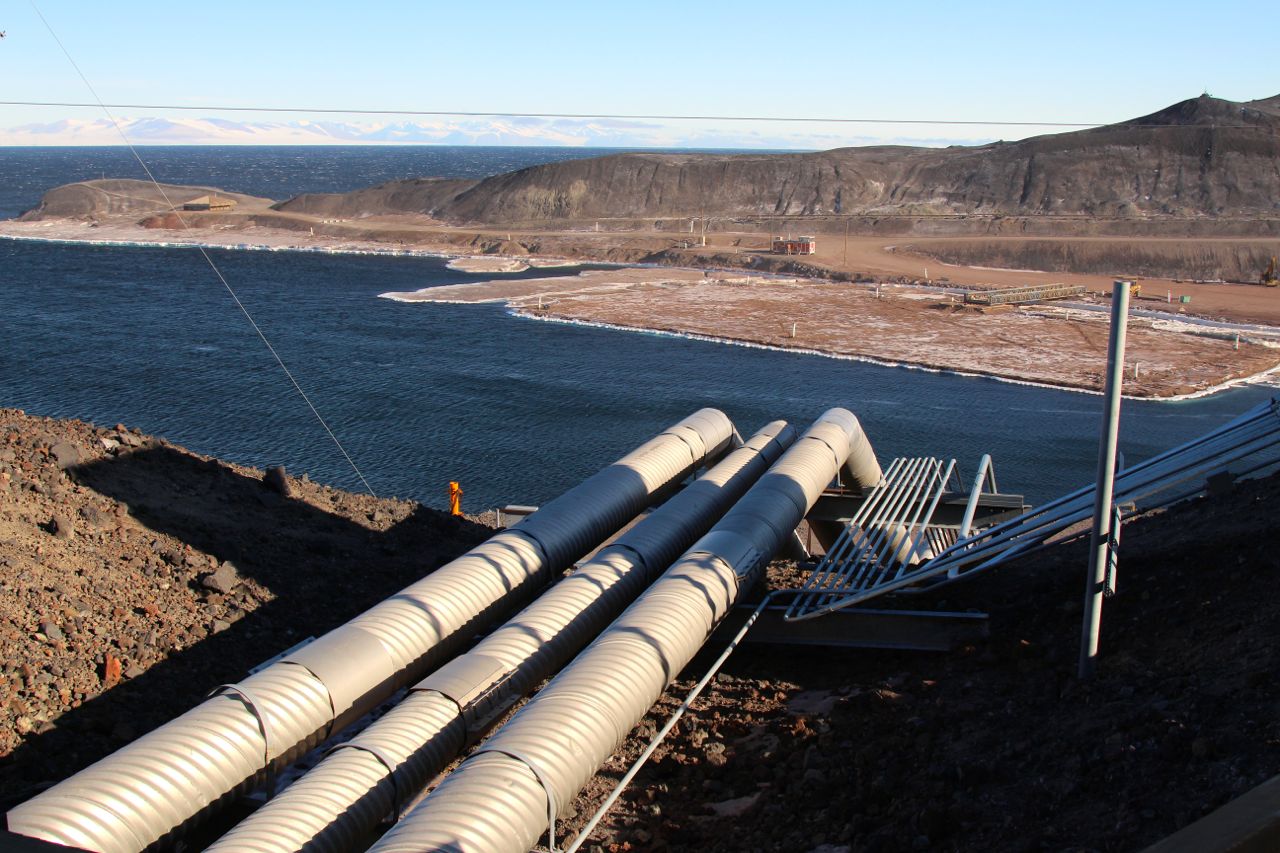
The McMurdo ice pier. Note the bollards and little bridge to the mainland.
Personnel desiring to obtain a penguin specimen must deposit $50 with the OinC WAOF. These funds will be transferred to Task Force 43 Rear Echelon in Washington, D.C, and the $50 refunded after the specimen is mounted by a taxidermist.
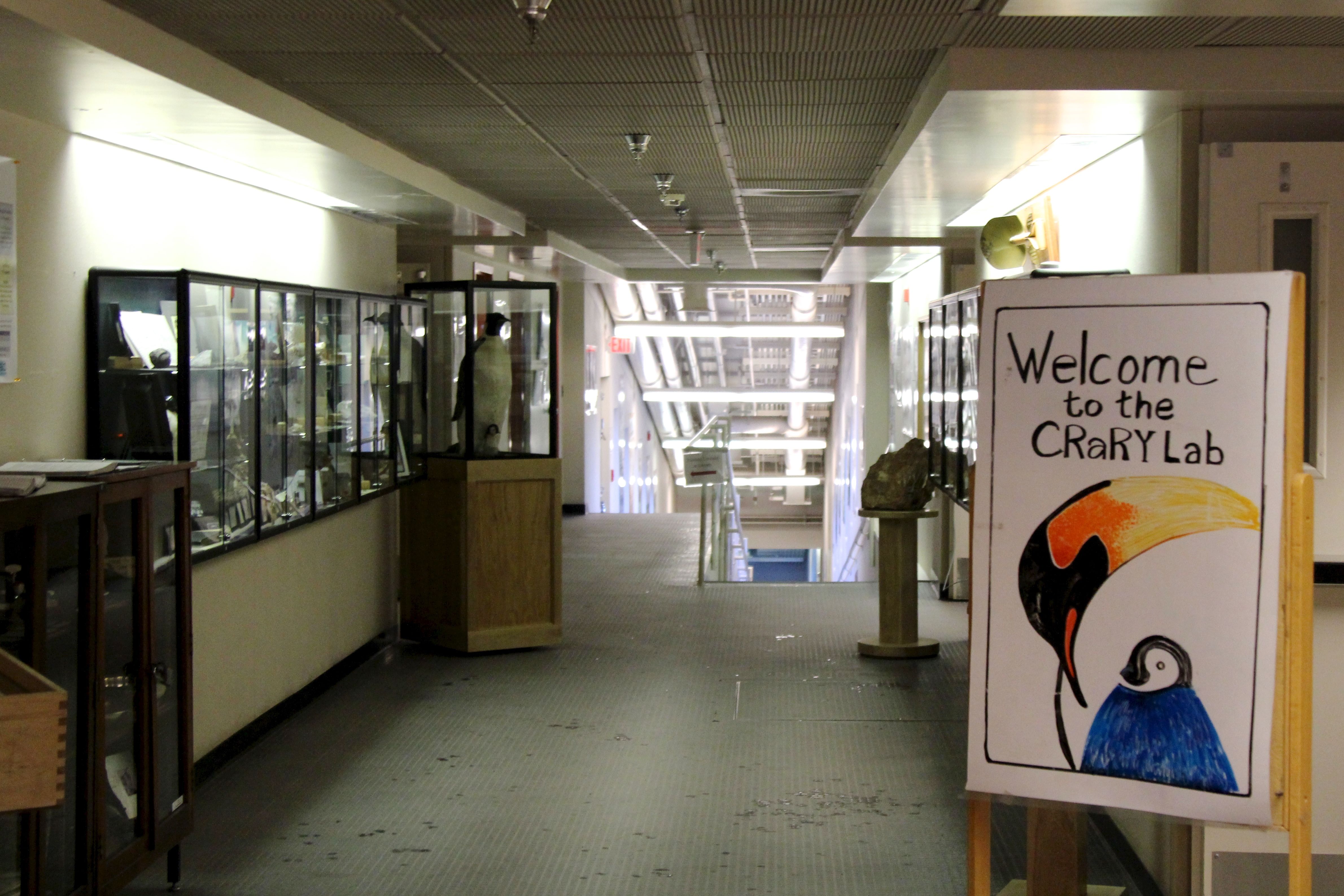
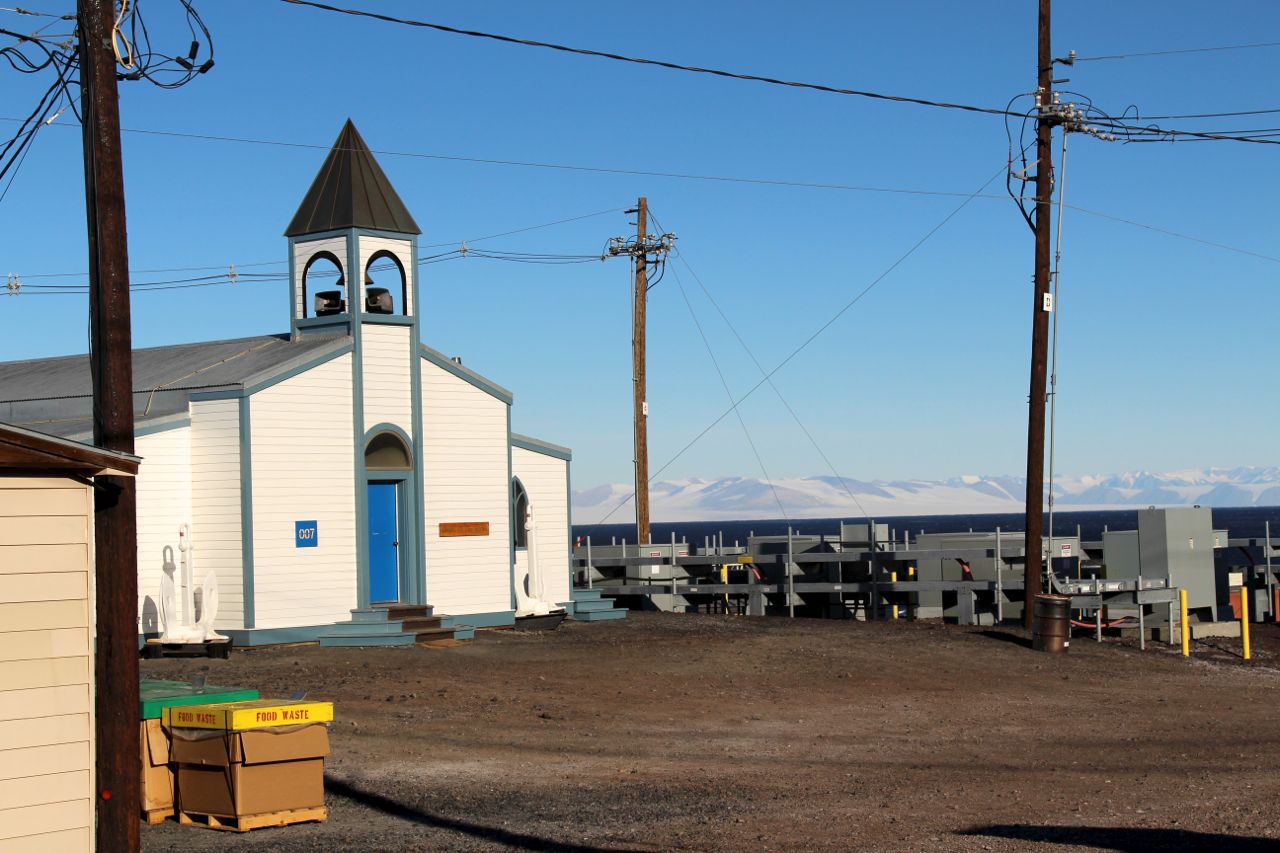
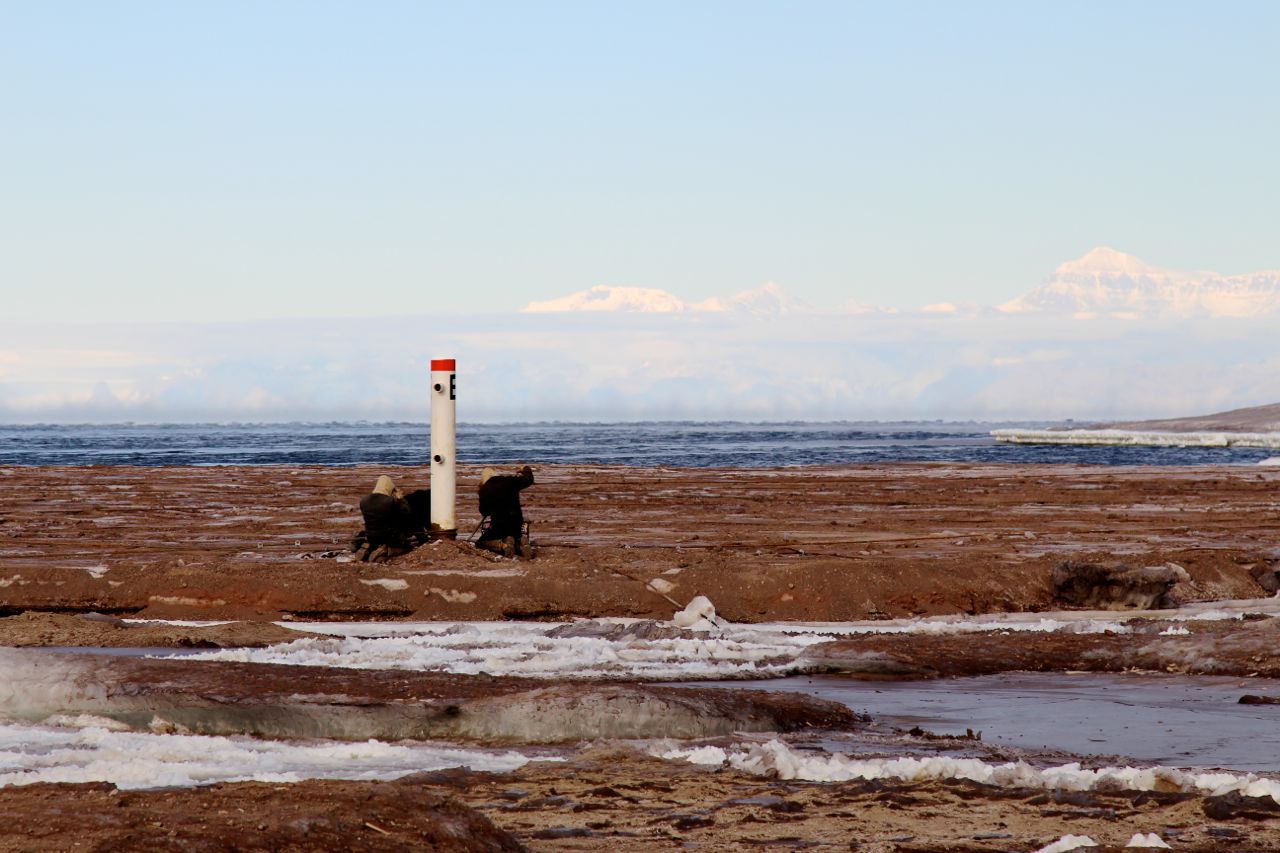
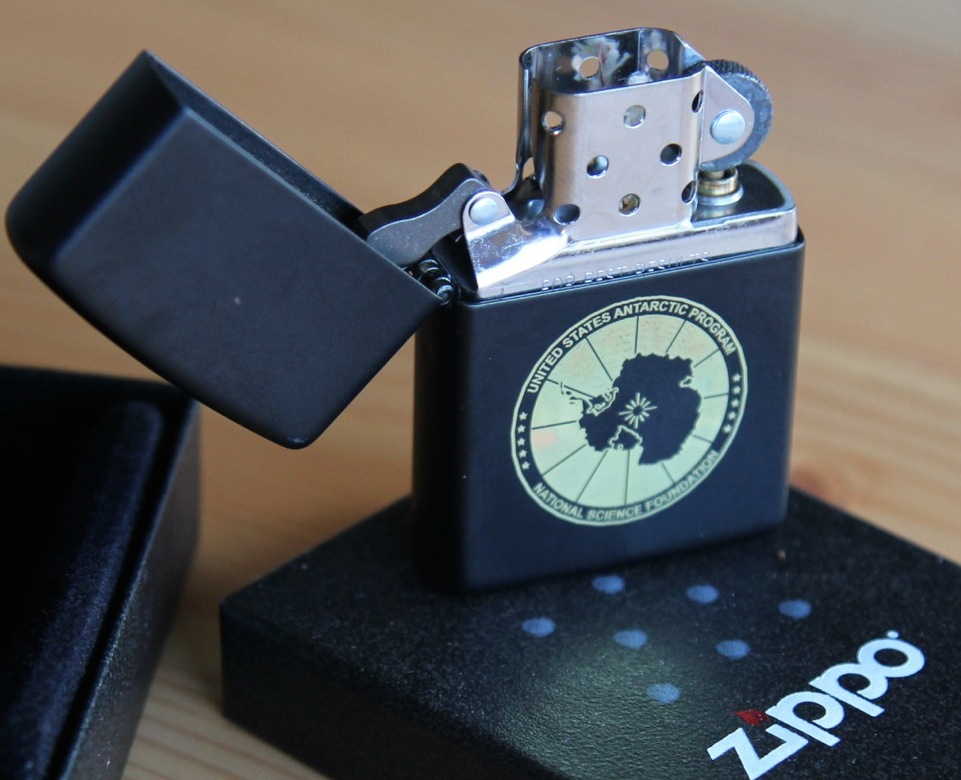
| « The Advertising Bubble | Cape Adare » |
brevity is for the weak
Greatest Hits
The Alameda-Weehawken Burrito TunnelThe story of America's most awesome infrastructure project.
Argentina on Two Steaks A Day
Eating the happiest cows in the world
Scott and Scurvy
Why did 19th century explorers forget the simple cure for scurvy?
No Evidence of Disease
A cancer story with an unfortunate complication.
Controlled Tango Into Terrain
Trying to learn how to dance in Argentina
Dabblers and Blowhards
Calling out Paul Graham for a silly essay about painting
Attacked By Thugs
Warsaw police hijinks
Dating Without Kundera
Practical alternatives to the Slavic Dave Matthews
A Rocket To Nowhere
A Space Shuttle rant
Best Practices For Time Travelers
The story of John Titor, visitor from the future
100 Years Of Turbulence
The Wright Brothers and the harmful effects of patent law
Every Damn Thing
Your Host
Maciej Cegłowski
maciej @ ceglowski.com
Threat
Please ask permission before reprinting full-text posts or I will crush you.